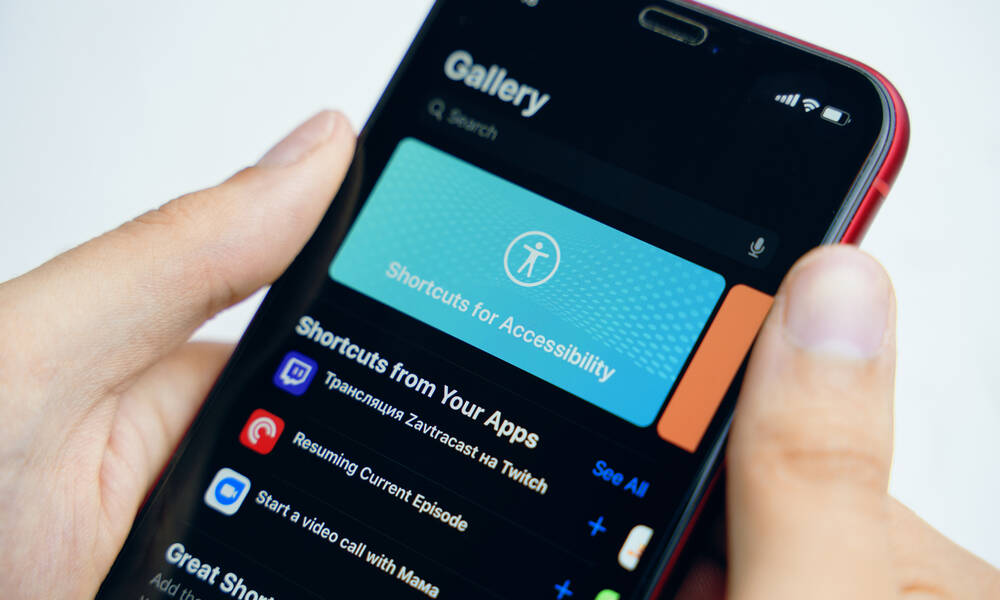
A Big BYOD Fix Worth Writing Home About
“Bring your own device” has been an enterprise mainstay for years, despite its various end-user weaknesses. But a new iOS feature from Apple could make it easier to balance business and pleasure.
You know a term that has become more and less common all at once? “Bring your own device,” or BYOD.
The term refers to letting employees use their own devices on the job, and for a long time it seemed like it was everywhere in tech conversations (I wrote about the trend way back in 2012, when smartphones were way less fancy and had a far lower screen-to-body ratio). But it faded from discussion a year or two ago thanks in part to the fact that it had become terribly common. Everyone has a smartphone now—and IT departments are well-versed in managing device policies of this nature.
But that doesn’t mean there isn’t room for the BYOD situation to improve in tangible ways. In recent years, for example, some enterprise firms have made available custom apps for employees through whitelist programs offered by Google and Apple. These apps generally aren’t meant for the public and don’t require the same level of aggressive approval that Apple is known for with iOS. But this approach exposed some sizable problems with data security—particularly in the case of Apple, which ran into issues with its enterprise apps program this year after both Google and Facebook exploited the program with data-siphoning marketing apps.
And there are other, more frustrating issues, including BYOD’s effect on work-life balance and a lack of control over device security in contexts like, say, working in a coffee shop. One of the biggest questions involves what happens when employees leave—with your association’s data embedded on their phones. Solutions to this problem have always felt incomplete or invasive—as if you’re either accepting leaky holes or resorting to deleting content on the user’s device, as Google’s Android Enterprise can do, just to ensure there’s a “clean break.”
Fortunately, Apple has been working on this problem with its latest version of iOS, released last month. And its solution could change the dynamic of mobile device management (MDM) for the long haul.
A new enterprise feature in iOS 13 called user enrollment helps reestablish the clean line between work and play that corporate mobile devices once had but that BYOD blurred. Basically, it silos the work apps—say, your email or Slack—under a separate Apple ID from more traditional apps, such as all those games you play while you’re stuck on a plane. The technology uses the iOS file system to create a separation between personal and professional—and when the employee leaves, the contract is revoked and the work data is separated, with no impact on their installation of PUBG Mobile.
In an interview with TechCrunch Editor-in-Chief Matthew Panzarino last month (check it out on YouTube, above), Apple Vice President of Product Marketing Susan Prescott noted that the feature represents the latest evolution of iOS devices in the enterprise, which—it’s worth keeping in mind—was an original use case for the iPhone and iPad. User enrollment takes things back to basics, in a way, even though it’s doing complex things like creating partitions on your device.
“And with that, we have the ability to—and this is simplifying it, but it’s a really powerful concept—without crippling your access to apps and services for your personal use, give you protected, appropriately sandboxed access to the apps and services your company wants you to be using,” Prescott said in the interview during TechCrunch’s Sessions Enterprise event.
This is a niche feature—the kind of thing that doesn’t get the marquee treatment that Apple’s television and gaming efforts for iOS have received in recent years—but it could be hugely significant for employers, even if smartphones are associated with objectively fun things, too.
Apple has devoted a lot of resources to this issue, because it can have a halo effect for the company’s ecosystem. As Computerworld explains, if users are already on an iPad and iPhone, they’re more likely to want their employers to give them a Mac.
This is only one way that the enterprise space is evolving on BYOD years after it first gained notice—both by first-party vendors like Apple and Google and third-party vendors like BlackBerry—but it feels like a breakthrough. It reflects acceptance that smartphones are general devices at this point that just happen to have significant business uses. If you’re the kind of person who carries two phones, we might be reaching the point where you can cut down to one.
And some enterprise IT observers, like Jack Madden of TechTarget’s BrianMadden.com, see the move as lifting up other BYOD solutions as well.
“Overall, we can safely assume that MDM enrollment rates will increase under user enrollment, and that this is a huge opportunity for [enterprise mobility management] vendors, enterprise customers, Apple, and end users alike,” Madden wrote.
You may think of BYOD as a “solved” issue—but as this solution shows, we might be getting better at solving it than ever.
(Savusia Konstantin/iStock Editorial/Getty Images Plus)






Comments